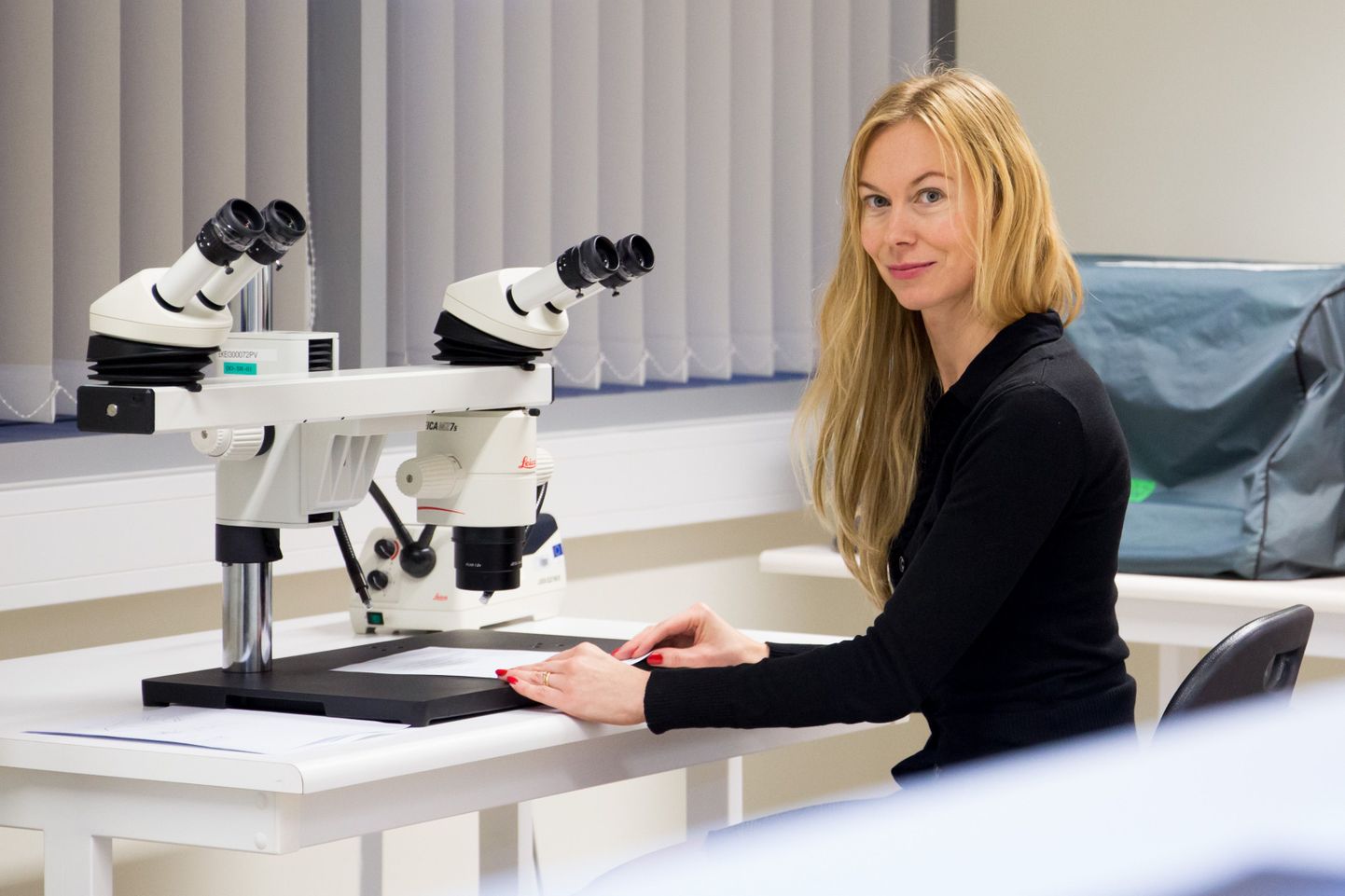
In her daily work, Forensic Science Institute (EKI) handwriting expert Eve Kristjankroon reveals falsifiers of wills and identity thieves. If needed, she solves a murder mystery.

In her daily work, Forensic Science Institute (EKI) handwriting expert Eve Kristjankroon reveals falsifiers of wills and identity thieves. If needed, she solves a murder mystery.
«Usually we solve economic disputes, as all kinds of contracts, applications – like instalment purchase-sales contracts done with ID-cards stolen or found and if these have a very simple signature, it is easy to buy something in another’s name,» said Ms Kristjankroon. Frauds are also widespread with sales of cars and registration thereof at Road Administration offices.
With 15 years of professional experience, Ms Kristjankroon says they have recently started to see home-written wills. As it stands, a whopping half has been confirmed as falsified by the experts.
Murder planned in writing
Estonia’s only murder thus far proven thanks to handwriting identification happened four years ago.
On February 18th 2011 a brutal murder was committed in a Mustamäe, Tallinn apartment house. Merlis (30) and Ingrid (17) who lived with the man decided to kill landlady living in the selfsame flat due to €35 of unpaid rent. At 7 in the morning, the couple sneaked out of the bedroom and killed the woman aged 79 using a pillow and a hammer. After the murder, a TV, a mobile phone, a hair curler and 600 Estonian kroons in cash disappeared from the apartment.
While Merlis confessed the murder after arrest, Ingrid denied any links to the murder and promised to immediately stop communicating with the man. Searching the apartment, however, a weird correspondence was discovered. As established by handwriting expert analysis, the man and the woman had planned the murder in writing.
«As they did not want to talk loud in the apartment about how and when, the girl took her eyebrow pencil and they launched a dialogue,» said Ms Kristjankroon.
«I dare to, do you dare?» asked the young woman in writing. As the experts discovered, Ingrid though in denial was actually the engine of the plot. «This was the girl’s idea and she kept insisting it on the man,» said Ms Kristjankroon. The man and the minor woman were jailed for 14 and 10 years respectively.
At times, the experts have helped with graffiti. Two years ago, a group of graffiti artists were applying their skills on Elron trains at Aegviidu and Viljandi depots. «We compared the graffiti and saw that the shapes of letters and the fount and style are the same,» said Ms Kristjankroon, adding that usually a person keeps writing one and the same text as graffiti. With the company of three, it was clearly seen who had authored what. «Immediately it was seen that the same bunch of three people had on one date been to Viljandi and the other date to Aegviidu.» But the vandals themselves fled across the border to Russia.
In a year, about 150 handwriting expert assessments are performed at the institute. «The volumes of assessments greatly vary: sometimes they only contest a single signature on a document; at other times there are a number of documents with signatures by several people, or handwritten texts. On occasions, minutes of an apartment association meeting are sent to us where all signatures will have to be verified because they doubt that some of these have been falsified,» said the expert.
The vital random samples
For handwriting expert assessment, materials are sent by judges and investigators. «When something is sent to us, for the expert assessment there are collected the individual’s free samples i.e. signatures given earlier such as on identity documents of bank contracts; on top of that, we always take experimental samples – these are such as the individual writes for us experts on location,» said Ms Kristjankroon.
«The random samples are always important as with experimental samples people may always write them differently, intentionally,» she noted.
When assessing the authenticity of a signature, it is always important to see how the individual has given the signature at earlier times. «I look to see if the differences with the contested signature fall within the natural limits of variations as no-one ever writes the signature exactly the same twice. If the discrepancies exceed these limits, it is a counterfeit,» she said.
According to Ms Kristjankroon, handwriting expert assessment is a most ancient type of criminal assessment used solely for identification if persons and she asked us to not confuse it with graphology – a pseudo science where handwriting is used to determine character, age or traits of people.
In handwriting expert assessment, an expert uses a scale of nine to express her opinion. The first level being that identification of the writer of the signature is impossible. «In addition to opinions whether the people have given the signature of not, depending on the definite occasions we provide opinions of varying degree of likelihood,» explained the expert.